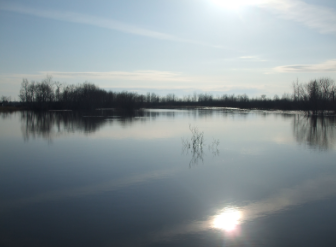
Engineers, Don’t Flood the Fidgits!

Overview
Students will design a city for the Fidgits to protect them against flooding. Students have a budget to purchase materials with and select from a variety of housing options and community features as they design a city for the Fidgets. Once finished, they “flood” the city and see how their design held up. They may then strategize and re-design the city based on the results and flood it again two more times to improve on their work.
Learning Objectives
Students will:
- Design a city to house the Fidgits and keep them safe from flooding.
- Be introduced to the design process.
Vocabulary
Vocabulary Words:
-
Design Process: The design process is an approach for breaking down a large project into manageable chunks.
-
Engineers: Engineers are people who design and build things to solve problems that we have and invent things we use every day.
Pre-planning
To prepare for this lesson:
-
Review the PBS Kids Design Squad game.
-
Review the optional video that introduces students to engineers.
Accommodations
See the Accommodations Page and Charts on the 21things4students website in the Teacher Resources.
Steps
Directions for this activity:
Explain to students that they will be using the engineering design process to help them build a city to protect Fidgits from flooding. You may show the optional video that explains the process. The first step is to define the problem, and that is the city needs to be built in a way that Fidgits will have homes to live in even when it floods.
Open up the game and model how to find it. Watch the opening video sequence that explains what flooding and hurricanes are. The video will then explain to students how to play the game.
Review key points with the students on how to build a city. Explain that they will collect information to better design a city. Select an option (river, island,etc.) and model how to choose and place materials. Build a first attempt at the city. Together brainstorm ideas and solutions, and connect it to the design process. Gather input from the class as you work. Note to students that some building options are only available for the island, such as a seawall, and sometimes the item is placed in the water and not on land.
Flood the city. Connect this to gathering feedback so you can improve the design. Be sure to explain at the end they are given hints on what helped and suggestions. For non-readers have them notice the different icons used. Explain how the design process they will now start again with defining the problem (e.g., The houses were built too close to the ocean.) and repeat the design process.
Model two more series of designs and floods to finish the game, connecting it to the design process as you work.
The students will complete the game independently.
Optional: Students may record themselves, write a journal entry, or share with a partner explaining what worked well in their design and how it solved the problem of protecting Fidgits.
Assessment Options
Different options for assessing the students:
- Observations
- Check for understanding
- Create a rubric to check off and assess that they have completed the design.
MITECS Competencies & ISTE STANDARDS
MITECS: Michigan adopted the "ISTE Standards for Students" called MITECS (Michigan Integrated Technology Competencies for Students) in 2018.
Innovative Designer
4a. Students know and use a deliberate design process for generating ideas, testing theories, creating innovative artifacts or solving authentic problems.
4b. Students select and use digital tools to plan and manage a design process that considers design constraints and calculated risks.
4c. Students develop, test and refine prototypes as part of a cyclical design process.
4d. Students exhibit a tolerance for ambiguity, perseverance and the capacity to work with open-ended problems.
Devices and Resources
Device: PC, Chromebook, Mac, iPad
Browser: Chrome, Safari, Firefox, Edge, ALL
Websites:
Nasa for Kids optional video
CONTENT AREA RESOURCES
ELA
K.W.3 Use a combination of drawing, dictating, and writing to narrate a single event or several loosely linked events, tell about the events in the order in which they occurred, and provide a reaction to what happened.
Math
K.G.1 Describe objects in the environment using names of shapes, and describe the relative positions of these objects using terms such as above, below, beside, in front of, behind, and next to.
Science
-
K-2-ETS1-2 Develop a simple sketch, drawing, or physical model to illustrate how the shape of an object helps it function as needed to solve a given problem.
-
K-2-ETS1-3 Analyze data from tests of two objects designed to solve the same problem to compare the strengths and weaknesses of how each performs.
-
3.5 Make observations (firsthand or from media) and/or measurements of a proposed object or tool or solution to determine if it solves a problem or meets a goal.
Social Studies
K-G5.0.1 Describe ways people use the environment to meet human needs and wants (e.g., food, shelter, clothing). Civics and Government.
CREDITS
This task card was created by Patricia Paxton, Armada Area Schools, June 2018.


